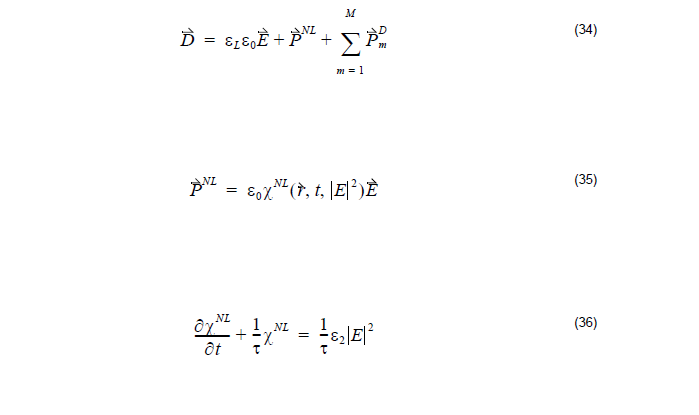If the time scale over which the medium changed is greater than the pulse width, we
should take into account the effects of the finite response time of the medium.
Followed by Prof. Richard W. Ziolkowski ‘s work [1]-[4], OptiFDTD treats the
nonlinear effect with a finite response time as well as an instantaneous manner by
solving the phenomenological susceptibility equation simultaneously with Maxwell’s
equation:

where
| εL | is the linear relative permittivity |
| XNL | is the nonlinear susceptibility |
| τ | is the response time |
| ε2 | is the Kerr model permittivity |
Therefore, in order to simulate the Kerr effect, you should setup the three parameters,
εL, τ, and ε2.

